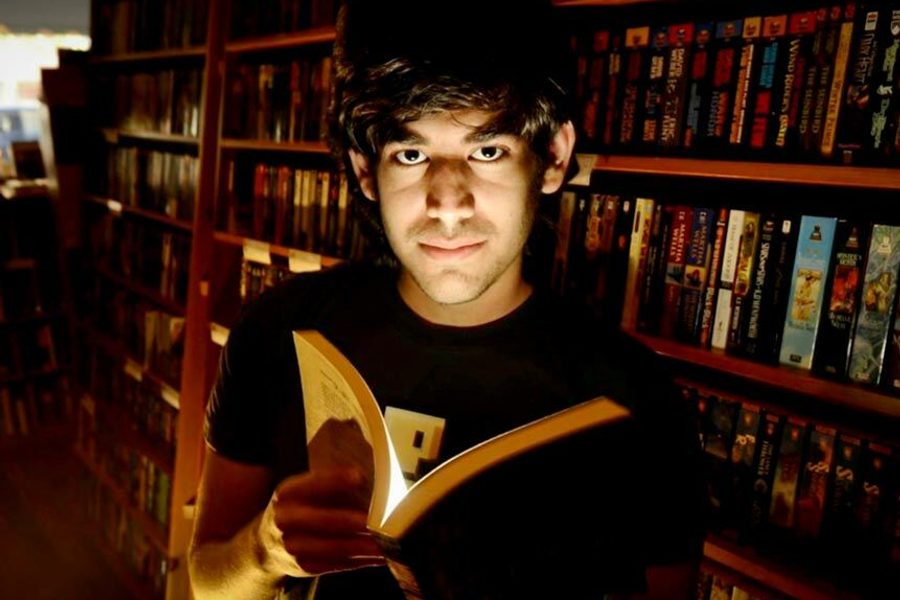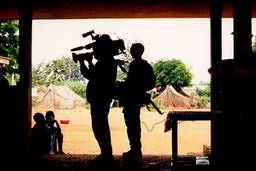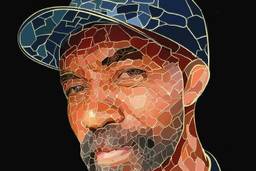
Aaron Swartz was an Internet prodigy and a trouble-maker. The new documentary The Internet’s Own Boy: The Story of Aaron Swartz is not only about Swartz, but about why we should care about the issues he cared about, and the trouble that triggered his suicide. Swartz was committed to an open and secure Internet, and was acutely aware of how that openness is compromised in different ways every day. To Brian Knappenberger, the film’s director, Swartz was something of a canary in a coal mine. “We all live massively networked lives,” Knappenberger explains. “All our lives have an Internet component to them. So everyone lives online and yet no one knows how it works.”
Swartz, who was only 26 when he died in 2013, was a child of the Internet. He grew up with computers and began writing code at a young age. He was a furious inventor; as a teen he helped design the web feed service RSS and the copyright licensing system Creative Commons. At 20, Swartz got rich when Reddit (the crowd-source aggregator with which he’d merged his own start-up site) was sold to Condé Nast.
The film tracks the development of an extraordinary talent, who used his talents in unorthodox ways to resist both money and power. Up until his strike-it-rich moment, Swartz could have been any of a number of Silicon Valley whiz kids. But then he just walked away from the game; as his one-time girlfriend explains in the film, he wanted his work to change the world, not just make money. He couldn’t find a way to do that in start-up culture, so he headed east, and cast about for social change.
“[Swartz] was concerned about the walling off of information,” says Knappenberger. He was outraged that a core beauty of the Internet — the ability to share information — was being restricted because of corporate design and being used by the powerful for surveillance both of citizens and consumers. In response, he tried to mobilize his community of geeks and wonks. He nurtured the Free Culture movement, which pushes back on copyright restrictions. In conjunction with Carl Malamud of Public.Resource.Org, he protested the government’s charging for federal court records by the downloading millions of pages of records and making them available for free online. He founded the advocacy group Demand Progress to push for open access and open Internet policies.
Swartz also protested, like many others, the commercialization of human knowledge in academic journals, which private companies sell to libraries at extraordinarily high prices. It was this injustice that spurred him to a new act of civil disobedience, as the film reveals through interviews, surveillance footage and news clips. He got into an open closet at MIT, where a server let him access a trove of academic journals kept behind a paywall by the nonprofit JSTOR. He downloaded a massive number. MIT reported him to the federal government, which slapped 13 felony charges on him, nine of them under the Computer Fraud and Abuse Act. That legislation, which metastasized post-9/11, makes even ordinary household acts such as sharing your Netflix password potentially punishable as felonies.
While the government ramped up its case, Swartz kept on protesting. He helped lead the fight that eventually stopped legislation known as SOPA/ PIPA (that was the moment when Wikipedia, Craigslist and other sites all went black for a day), which could well have broken the mechanics of Internet traffic.
Although his lawyer believed he could have argued Swartz’s innocence, the activist apparently became increasingly despondent, and in January 2013 he hanged himself. In the Internet activist community, the news was shattering. The hacker group Anonymous conducted hacking demonstrations, there were vigils, and Swartz became a symbol.
But a symbol of what? That is where The Internet’s Own Boy is so smart, as well as engaging. It would be easy to make Swartz into a martyr of a utopian, digital free culture. The story Knappenberger decided to tell, however, is more nuanced and useful to us all, finding the political framework in which this is not only a personal tragedy, but a story about what is at stake in Internet policymaking. Its significance is in the way in which Swartz crossed governmental forces that threaten our civil rights and inhibit the evolution of a democratic and democratically monitored Internet — by spying on us, encouraging vast overreach of copyright holders and using governmental force to bully protesters.
The Internet’s Own Boy is darker in its storytelling than Knappenberger’s previous film, We Are Legion: The Story of the Hacktivists, which tracked the development of Anonymous from a group of reckless nihilists to a proliferation of subcultures in which one dominant strand was made up of thoughtful free-speech activists.
“I made We Are Legion on the heels of the Julian Assange warlogs, the denial-of-service attacks by Anonymous, Tunisia, Arab Spring, Occupy. That film reflected that energy,” says Knappenburger. “But the year after that was the year of the crackdown. We saw that overreach. This is … a darker story, for a darker time.”
Knappenberger deeply respects and shares Swartz’s concern for open access, but he also has a film to sell. Knappenberger says that he received “huge financial offers” for the film after it debuted at Sundance in January. “But I was dedicated to the spirit of the film and to Aaron’s free-access and Creative Commons principles,” he explains. “I wanted to use a noncommercial, share-alike Creative Commons license.” Under such a license, the user pledges not to sell the work, and to share it without altering it.
In the end, Knappenberger chose Participant Media, a company launched by former eBay president Jeff Skoll, to make his unconventional vision a reality. Participant is committed to social action, and its engagement wing, TakePart, is busy structuring an action plan for viewers who want to get involved. When the film is released in theaters in June, it will be simultaneously available on most digital platforms, including Participant’s own TV channel, Pivot. Vimeo will do electronic sales, but without the encryption that would keep buyers from sharing.
“So it won’t be made available for free, but we aren’t going to stop you from sharing what you bought,” says Knappenberger. “Let’s see if it covers the costs. I’m not unconditionally okay with piracy, but I err on the side of more sharing is better.”
Knappenberger hopes that The Internet’s Own Boy makes clear that we’re all in the Internet family now: “The Internet isn’t for hackers and geeks anymore. The Internet is for all of us. It’s a machine made of code and laws, and everyone should be able to have a say in it, because it’s the new commons.”
“>








